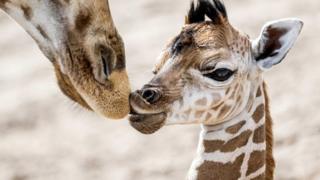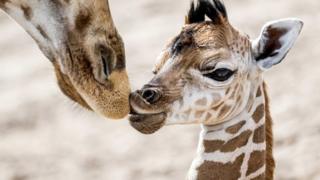Giraffes given greater protection from unregulated trade as numbers fall

 Image copyright EPA
Image copyright EPA Giraffe conservation has taken a big step forward with the world’s tallest mammals receiving enhanced protection from unregulated trade.
The move will regulate the trade in giraffes and their body parts under the Convention on International Trade in Endangered Species (CITES).
The vote was overwhelmingly approved, although some countries opposed it.
Giraffe numbers in Africa have fallen by 40% in the past 30 years, in what is being called a “silent extinction”.
The mammals are largely targeted for bushmeat but body parts are also used to make products including jewellery, bracelets and purses, the proposal stated.
The motion came from the Central African Republic, Chad, Kenya, Mali, Niger and Senegal, where giraffe populations have been diminishing heavily.
But there was resistance from southern African countries, including South Africa, Botswana and Tanzania, where giraffes have fared better.
They argued that there was scant evidence to suggest international trade was contributing to the decline of the giraffe.
Despite the opposition, 106 parties voted in favour of the motion, 21 voted against, with seven abstentions.
Media playback is unsupported on your device
Countries will now need to record the export of giraffe parts or artefacts and permits will be mandatory for their trade.
“The giraffe is, in the wild, much rarer than African elephants, much rarer,” Tom De Meulenaer, CITES’ scientific services chief, told a news briefing.
“We are talking about a few tens of thousands of giraffes, and about a few hundreds of thousands of African elephants. So we need to be careful,” he said.
Despite seeing the move as a positive one, Julian Fennessy, co-chair of the International Union for Conservation of Nature’s Giraffe and Okapi Specialist Group, said the new listing was “not going to save giraffe in the wild”.
Increased financial and political support was needed, along with boots and resources on the ground, to stop their decline, he said, adding that bushmeat for the domestic market was “by far” the biggest reason for poaching.
“Whilst Southern and West Africa populations continue to increase, the combination of poaching, predominantly for domestic use, habitat loss, human population growth and civil unrest in East and Central Africa are resulting in some populations’ ‘silent extinction’,” Mr Fennessy said.


